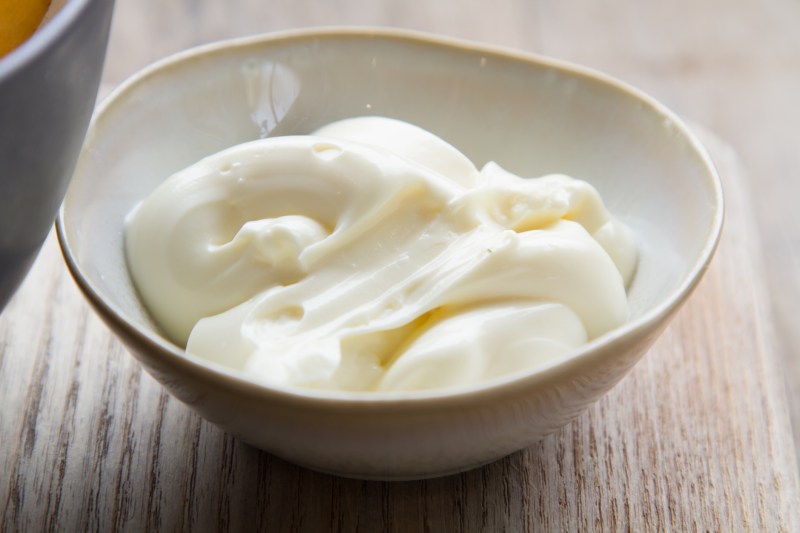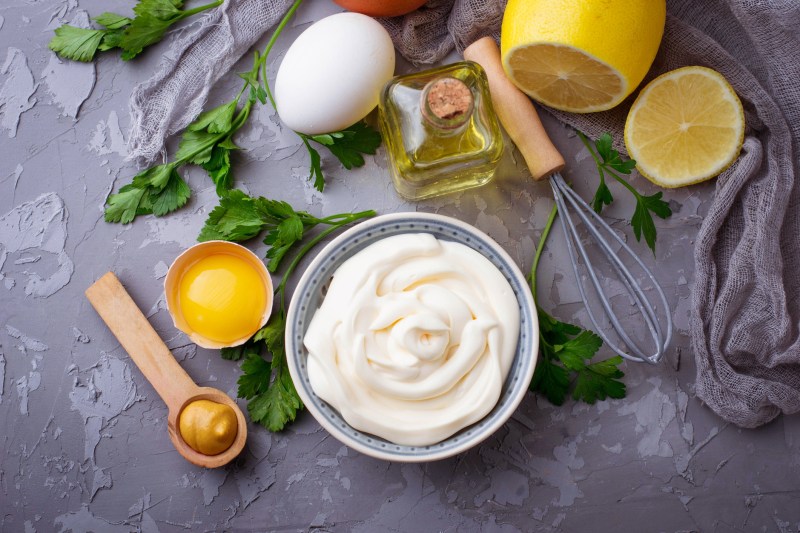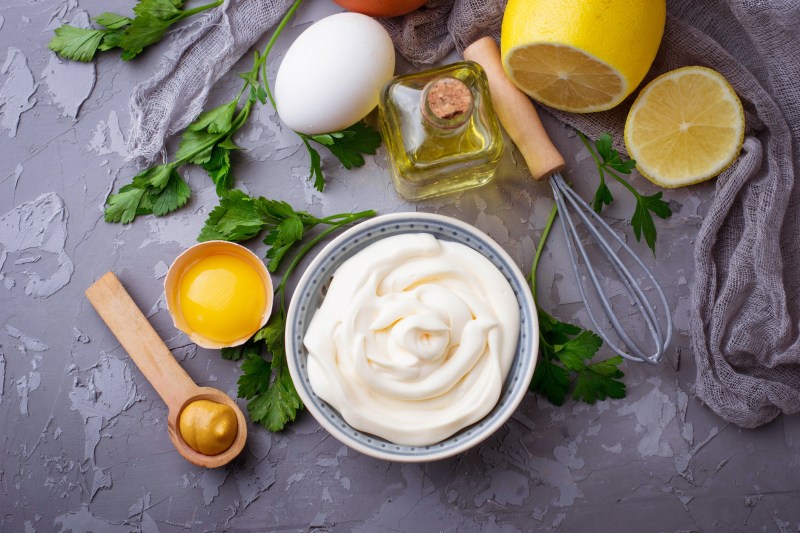No condiment causes more conversation than mayonnaise. Whether you love it or loathe it no matter how you spread it, this egg-based sauce is a polarizing topic.
From sandwich spread royalty to a shapeshifting dip to the quintessential salad dressing base, mayonnaise’s culinary lifeline beats strong throughout many of the foods we enjoy every day.
So what makes mayo so magical? And what is the secret ingredient to its long-lasting appeal?
To help take the mysticism out of mayo, we spoke with classically trained Chef Jen Kim, from Ferrandi Paris to get her insider advice on the great dressing debate.
The Making of Mayonnaise

Considered one of the Mother sauces of French cuisine, the first mayonnaise recipe rose to popularity in 18th-century French cookbooks but the simple combination of emulsified sauces has a history dating back to 14th-century Spain.
Through the ages, the simple combination of oil, egg yolk, and acid has stayed the same but with the addition of herbs and spices, the blend has become a base from many other sauces like remoulades and aiolis which have helped spread its fame across continents and cuisines.
Like many Americans, Kim describes her memories of mayonnaise in a similar sentiment that many of us share and notes some significant differences between the bottled version we are accustomed to versus the original French version in its purest form.
“As a child, I remember mayonnaise being this lumpy beige gross mass that came in large plastic jars that lasted for ages.” “The French mother sauce is an emulsion of egg and oil flavored with Dijon mustard and acid of some sort (such as lemon juice or vinegar) and tends to taste better in France because it’s made fresh, and uses a higher quality of eggs than in American mayonnaise.”
Mainstream Mayo

Regardless of the sauce’s stigma, one glimpse down the grocery aisle proves that mayo is more popular than ever. The shelves are packed with different labels, flavors, and versions to fit every tastebud, lifestyle, and recipe.
While most bottle brands make slight variations to the mayo manuscript, brands like Miracle Whip include sugar and spices placing it “on the more interesting end of the American Mayo spectrum,” Kim. says
Another popular variation, Kewpie, is a Japanese mayonnaise, made from egg yolks with the addition of rice-wine vinegar, which gives it a unique eggy, umami flavor and is the one store-bought brand Kim says she must have on hand at all times.
The Best Mayonnaise Ever

Even with so many premade options to dip into, for Kim, the best mayo is always your own.
“Homemade mayonnaise and store-bought mayonnaise are two distinct things, in my opinion, and cannot, and one should not, compare them.”
Making your own mayonnaise is effortless and gives you all the pure flavor and richness without any additives. Whipping up your own blend could be the key to bringing even the biggest mayo foe over to the correct condiment side.
“Mayonnaise is a great way to add luxury and richness. You can modify it based on what you’re cooking, and it’s a versatile base for flavorings. I love to add cilantro, lime, and gochujang (a Korean chili paste) to make a dip for artichokes or crudite’s.”
With just a few steps, Kim gives us her recipe for making the perfect mayonnaise at home.
“You don’t need an immersion blender or special equipment. You simply need a whisk, some oil, an egg (plus a few other ingredients), and a sense of possibility.”
Ingredients
- 1 fresh high-quality egg yolk at room temperature
- Around 3/4 cup grapeseed oil (or any other neutral oil)
- 2-3 tablespoons high-quality olive oil
- Salt and pepper to taste
- 1 teaspoon Dijon mustard
- 1/2 lemon or apple cider vinegar
- Mixing bowl
- Jar to store
- Whisk
- Dishtowel
Method
- Separate egg yolk and place into the mixing bowl. Set the mixing bowl on top of a dishtowel to provide stability to the bowl. Add 1 teaspoon of Dijon mustard. Whisk to incorporate.
- Then, gradually add the neutral oil to the eggs while whisking to incorporate. Start with a very small amount (like a teaspoon at a time) at a time until the sauce begins to emulsify.
- Once the sauce begins to emulsify, you can gradually add more oil while whisking vigorously. The sauce will thicken the more oil you add and the more you whisk. One egg yolk will hold around 3/4 cup to 1 cup of oil. Be careful not to add too much oil or the sauce will break.
- The final texture of the mayonnaise should resemble that of a pudding. When the mayonnaise is nearly the texture that you want, add 2-3 tablespoons of olive oil at the end for flavor.
- Once the texture of mayonnaise is to your liking, stop adding oil, and add 1-2 teaspoons of lemon juice (or apple cider vinegar), salt, and pepper to taste.
- Store the mayonnaise in a jar in the fridge for up to five days.
Mix-ins for your mayonnaise
- Any herbs you like or have on hand like Harissa, chili flakes, chili powder, or any spices for heat and depth of flavor
- Citrus juices, zest, interesting vinegar for acid
- Seeds, finely chopped alliums, or finely chopped pickles for texture
Tips
If the mayonnaise breaks (or the oil separates from the yolks and the sauce isn’t smooth), don’t worry; that means the oil and the egg yolk didn’t combine thoroughly. Grab another egg yolk and a fresh bowl, and slowly drizzle in the broken mayo to re-emulsify. Note – if you add another egg yolk, you’ll need to add more oil.”
Sign up for Jen Kim’s monthly newsletter and visit her on IG: @ledinnerparty



